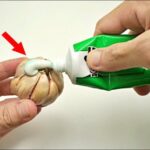As an essential household appliance, water dispensers are a staple in many homes, providing clean water to meet daily needs. This compact device combines the functions of a water purifier, kettle, and refrigerator. To use a water dispenser safely and efficiently, read on and explore the following guide.
1How to Use a Water Dispenser Safely and Efficiently
Clean Your Water Dispenser Before Use
When you get a new water dispenser, it’s important to clean it by running both taps for 3-5 liters of water to flush out the pipes and prevent future clogs. Afterward, use a clean cloth to wipe down the surface of the dispenser, avoiding harsh chemicals or cleaning agents to prevent rust and prolong its lifespan.
During regular use, maintain weekly cleaning to ensure a constant supply of clean water and efficient, safe operation of the dispenser.
Wait a Few Hours Before Moving Your Water Dispenser
When relocating your water dispenser, be aware that the gas inside the machine can escape, causing a shock if used immediately after moving. Thus, it’s recommended to wait for about 1-2 hours after moving to ensure stable performance and optimal hot and cold water temperatures. For dispensers equipped with Block technology, allow 3-5 hours for the gas to stabilize before use.

How to Use a Water Dispenser Safely
Position Your Water Dispenser Away from Walls
Place your water dispenser on a flat surface, maintaining a distance of 10-15cm from the wall to ensure effective heat dissipation and prevent premature wear and tear.
Use the Right Type of Water Bottle
Choose a water bottle that fits your dispenser’s design to prevent water spillage and internal damage. Additionally, opt for specialized water bottles and ensure that the water is filtered to safeguard your health.
Turn Off the Power When the Water Bottle is Empty
When the water bottle is empty or needs replacing, remember to turn off the power switch to ensure safety and prolong the life of your dispenser.
Don’t Plug the Water Dispenser Into a Shared Outlet
Provide your water dispenser with its own electrical outlet to prevent overloading and the risk of electrical short circuits.

Don’t Share an Outlet with Other Appliances
Assign a dedicated power outlet to your water dispenser to ensure safe operation.
Regular Maintenance and Repairs
Schedule regular maintenance for your water dispenser to ensure optimal performance and prevent malfunctions. In case of any issues, contact professional repair services instead of attempting DIY fixes, which could be dangerous and lead to more severe problems.

Regular Maintenance and Repairs
2 Important Notes When Using a Water Dispenser
To ensure efficient use and prolong the lifespan of your water dispenser, keep the following in mind:
Maintain a stable voltage of 220V for safety and high productivity.
Regular maintenance, warranty service, and cleaning are essential for optimal performance.
Avoid using chemicals or cleaning agents; instead, wipe down components with a clean cloth to prevent corrosion and contamination of drinking water.
Always check the power switches, hot and cold taps, and water levels before use to ensure a steady supply of hot and cold water.
Choose a dry and well-ventilated area for your dispenser to prevent internal components from oxidizing and rusting prematurely.
To prevent electrical hazards and unexpected issues, unplug the dispenser and drain the water bottle when not in use for extended periods.
For issues like power fluctuations, electrical faults, or failure to dispense hot or cold water, contact the warranty center for prompt assistance.

Important Notes When Using a Water Dispenser
Now you know the safe and effective ways to use a water dispenser. We hope this guide helps you take good care of this essential household appliance.
Purchase protective masks from us to safeguard your health:
Frequently asked questions
It is important to flush out your new water dispenser by running both taps for 3-5 liters of water to ensure the pipes are clear. Then, wipe down the dispenser’s surface with a clean cloth, avoiding harsh chemicals to prevent rust and prolong its life.
Maintain weekly cleaning to ensure a constant supply of clean water and efficient, safe operation.
Wait for 1-2 hours after relocating your water dispenser to allow any gas that escaped during the move to stabilize. This will ensure optimal performance and water temperatures. For dispensers with Block technology, allow 3-5 hours for the gas to settle.
Place your water dispenser on a flat surface, maintaining a distance of 10-15cm from the wall to allow for effective heat dissipation and prevent premature wear and tear.
Choose a water bottle that fits your dispenser’s design to prevent spillage and internal damage. Specialized water bottles are recommended to ensure the water is filtered and safe for drinking.
Turn off the power switch when the water bottle is empty or needs replacing to ensure safety and maintain the life of your dispenser.
No, provide your water dispenser with its own dedicated outlet to prevent overloading and reduce the risk of electrical short circuits.
It is best to assign a dedicated power outlet to your water dispenser to ensure its safe operation and prevent any issues.
Regular maintenance is key to optimal performance and preventing malfunctions. Contact professional repair services for any issues, avoiding DIY fixes which could be dangerous.
Maintain a stable 220V voltage, perform regular maintenance and cleaning, avoid chemicals, and always check power switches, taps, and water levels before use. Choose a dry, well-ventilated area for your dispenser to prevent oxidation and rust. Unplug and drain when not in use for extended periods.
You may also like






































